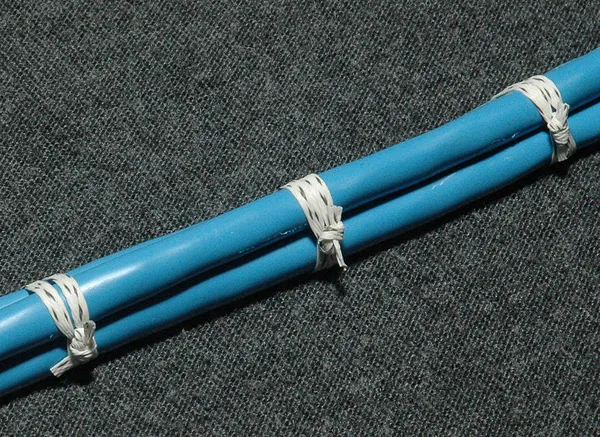Cable lacing is a technique for managing cables by lacing them together or to harnesses using a series of running lockstitches. This is done using waxed cord or flat lacing tape, often made of nylon or polyester. Where most people reach for plastic or Velcro zip ties to do this job, I’ve found that spending some time to use string is quite enjoyable. I’m not trained in the high standards of cable lacing used by NASA, the Navy, or other experts. But, for just managing cables around the house, these references work well.

Sure, there are many, many, many, many, many other places you can read about cable lacing, but this is my own mirror of the key ideas.
Starting
Lacing typically starts with a length of cord 2.5 times the length of what you want to lace together. You may need a little extra if you’re lacing together a lot of cords.
Lacing starts with a starting tie. There are a couple of good options here.

Or, lacing can also be started with a clove hitch and square knot, followed by two lock stitches.
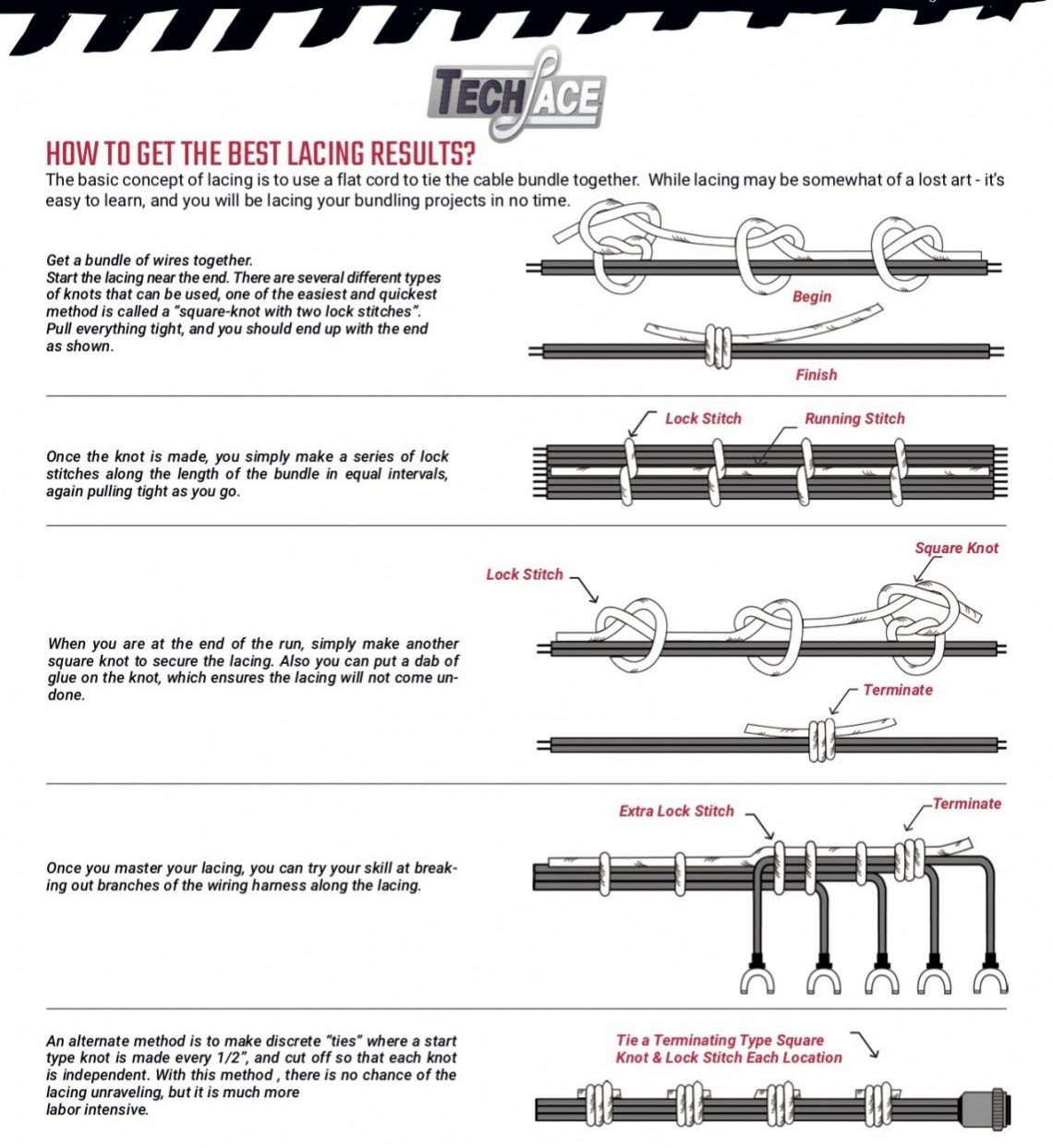
Running
For the length of the cables, you can use lock stitches (in this case, the marline hitch).
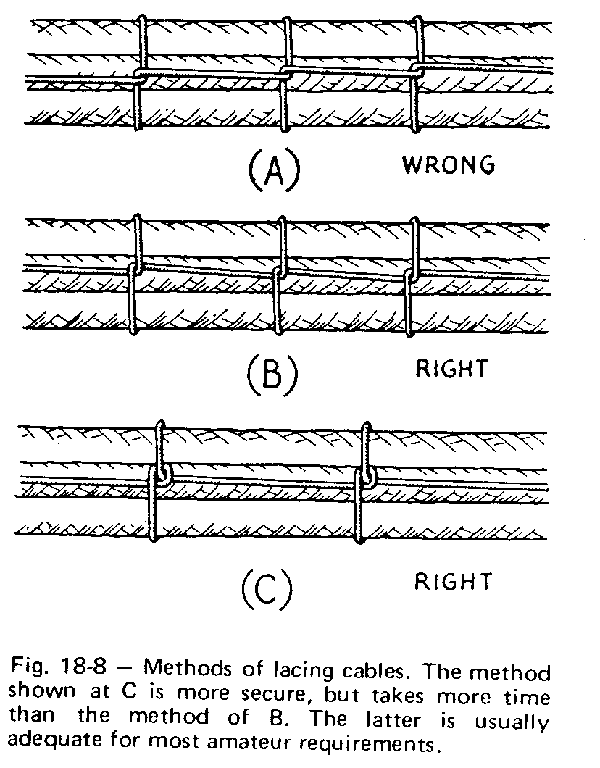
Note the correct technique is required for the hitch to hold.
Branching
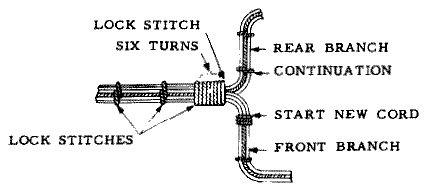
Terminating
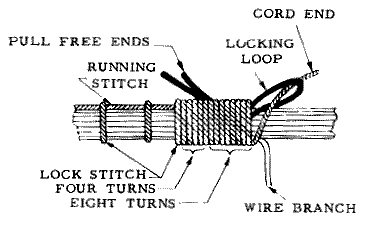
Or, like starting, you can also terminate with some lock stitches and a clove hitch with a square knot on top.
A note on individual lacing
Rather than a single continuous cord, you can also use a series of individual bound wraps at equidistant points along the cable. For this, use a clove hitch with a square knot on top.
